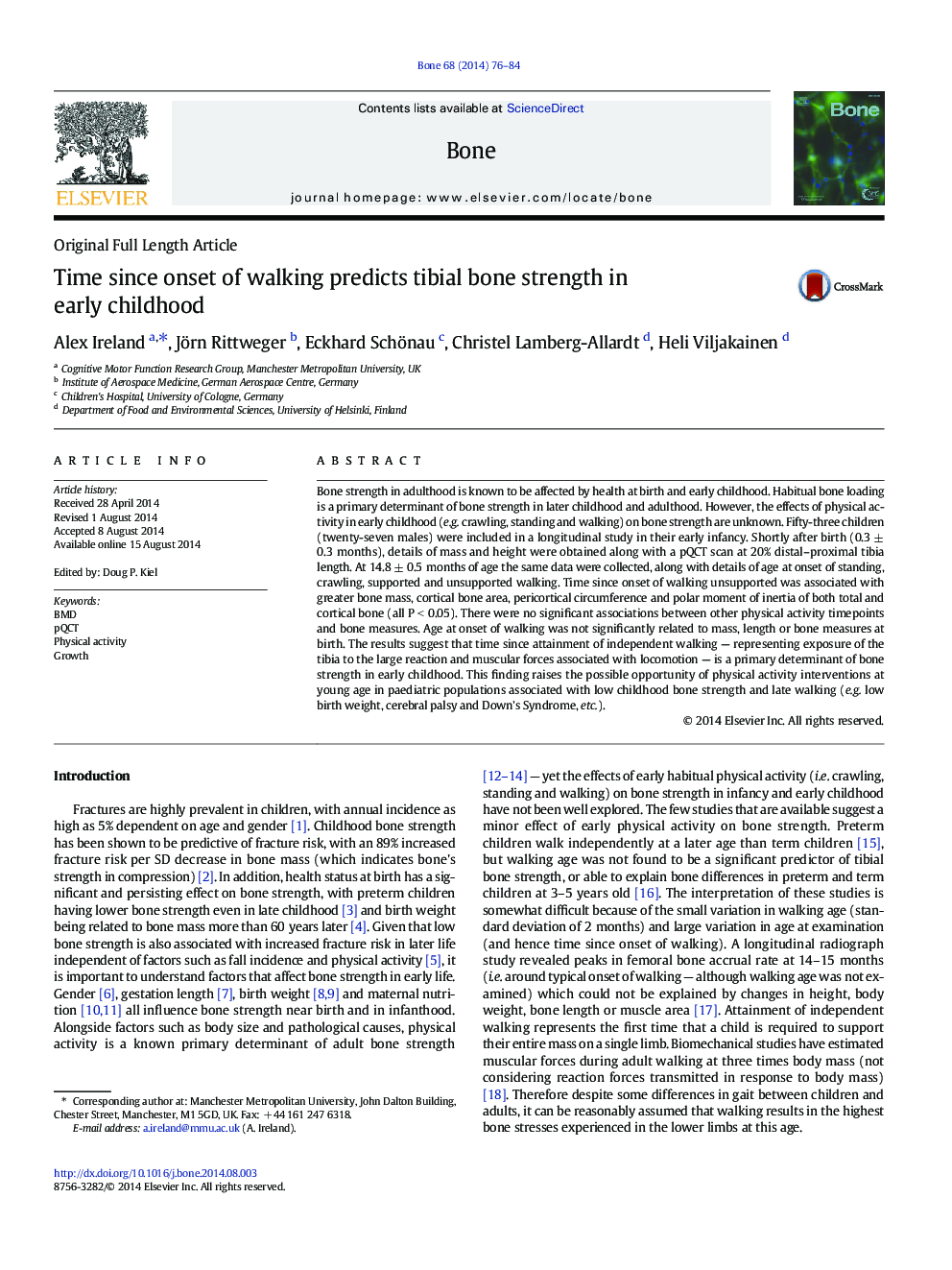| کد مقاله | کد نشریه | سال انتشار | مقاله انگلیسی | نسخه تمام متن |
|---|---|---|---|---|
| 2779194 | 1568151 | 2014 | 9 صفحه PDF | دانلود رایگان |
• Late onset of independent walking accompanies low bone strength and increased fracture risk in paediatric populations e.g. Down syndrome patients.
• Walking represents first postnatal exposure of the tibia to habitual loading far in excess of body mass.
• We examined tibial bone strength in the same children at birth and 14–15 months, along with onset of independent walking.
• Time since onset of walking was associated with bone strength at follow-up, even when body size and age were considered.
• Findings are supportive of controlled trials, aimed at developing interventions to improve walking onset and subsequently bone strength.
Bone strength in adulthood is known to be affected by health at birth and early childhood. Habitual bone loading is a primary determinant of bone strength in later childhood and adulthood. However, the effects of physical activity in early childhood (e.g. crawling, standing and walking) on bone strength are unknown. Fifty-three children (twenty-seven males) were included in a longitudinal study in their early infancy. Shortly after birth (0.3 ± 0.3 months), details of mass and height were obtained along with a pQCT scan at 20% distal–proximal tibia length. At 14.8 ± 0.5 months of age the same data were collected, along with details of age at onset of standing, crawling, supported and unsupported walking. Time since onset of walking unsupported was associated with greater bone mass, cortical bone area, pericortical circumference and polar moment of inertia of both total and cortical bone (all P < 0.05). There were no significant associations between other physical activity timepoints and bone measures. Age at onset of walking was not significantly related to mass, length or bone measures at birth. The results suggest that time since attainment of independent walking — representing exposure of the tibia to the large reaction and muscular forces associated with locomotion — is a primary determinant of bone strength in early childhood. This finding raises the possible opportunity of physical activity interventions at young age in paediatric populations associated with low childhood bone strength and late walking (e.g. low birth weight, cerebral palsy and Down's Syndrome, etc.).
Journal: Bone - Volume 68, November 2014, Pages 76–84
